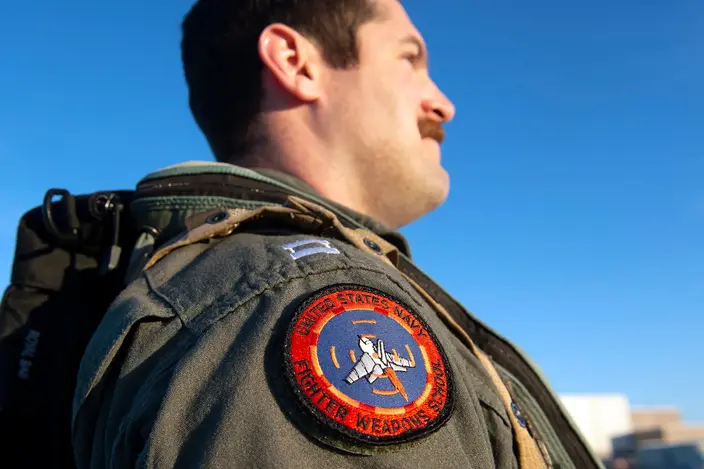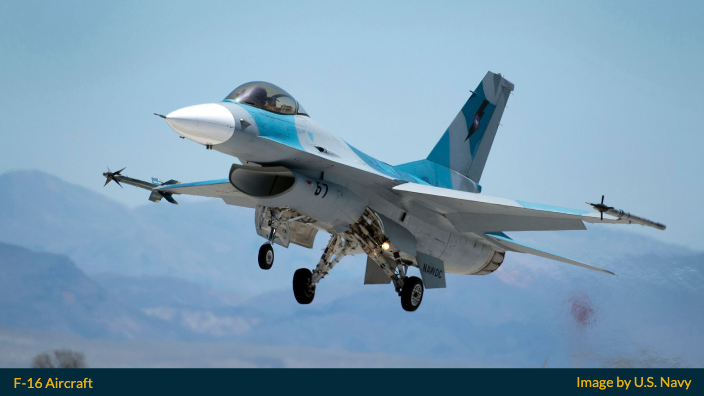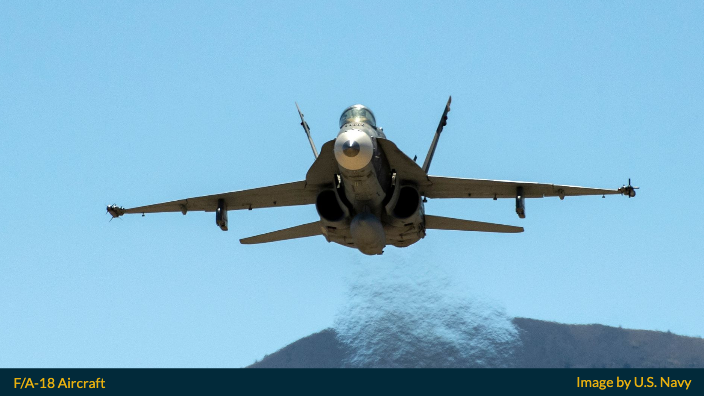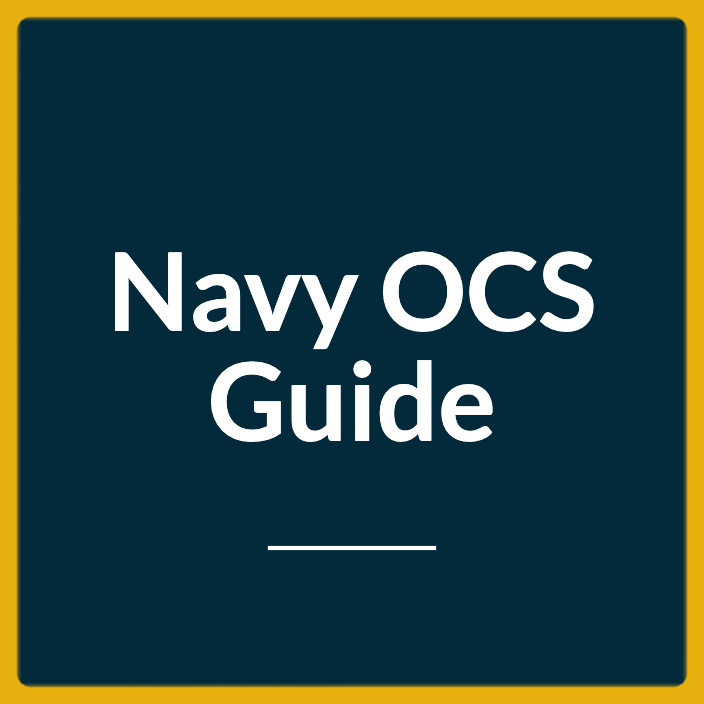You probably saw the movies and thought, “Is Top Gun real?”
It can’t be.
I mean, how can you be more Hollywood than Tom Cruise, right?
The short answer might surprise you.
Yes. Top Gun is an actual school in the United States Navy. We know it throughout the U.S. Navy fleet as the Naval Fighter Weapons School.
In this article, you’ll learn about the real Top Gun and not just what was depicted in the movies.
Origin of TOPGUN
Top Gun made everyone feel the “need for speed,” but the real Navy Fighter Weapons School wasn’t always world-famous. It started in 1969 in a trailer in the parking lot of Naval Air Station Miramar, California.
Why It Happened
During Vietnam, the Navy had better jets but was still losing too many pilots in air combat. They needed answers. So they put Capt. Frank Ault in charge of figuring out what was going wrong.
His Ault Report laid it out—pilots needed better training. More dogfighting skills. More real-world tactics. The solution? A fighter weapons school.
From Parking Lot to Elite Training
TOPGUN kicked off with four-week courses in F-4 Phantom II jets, drilling pilots on one-on-one aerial combat. No frills, just hard lessons.
That’s how it started—not with blockbuster hype, just a need to win fights and bring pilots home.
The school brought in specialists to teach pilots and naval flight officers how to use modern advances in the cockpit and attack enemy targets appropriately.

By 1970, just a year after launch, Navy combat losses dropped fast, while enemy casualties skyrocketed. The training worked.
Who Trains at TOPGUN?
- Fighter pilots
- Enemy instructors (to simulate real threats)
- Air-intercept controllers
Most graduates head to fleet weapons schools. A select few come back as instructors, keeping the TOPGUN standard alive.
The Patch That Says It All

Pass the course? You earn the TOPGUN patch. No words needed—everyone knows what it means. It’s on every graduate’s flight suit, a symbol of elite aviation skill.
From Miramar to Fallon
In 1996, the school moved to Naval Air Station Fallon, Nevada, merging into the Naval Strike and Air Warfare Center. Today, it’s part of the Naval Aviation Warfighting Development Center, alongside:
- Carrier Airborne Early Warning Weapons School
- Navy Rotary Wing Weapons School
TOPGUN was one of the first military “centers of excellence” and still sets the bar for elite training worldwide.
Evolution of TOPGUN
Since Top Gun hit theaters in 1986, aviation technology has leaped forward. But TOPGUN—the real one—was built to evolve.
The Strike Fighter Tactics Instructor Course, founded in 1969, has always adapted. The secret? The instructors. Unlike the movie, where students steal the spotlight, the real mystery of TOPGUN is its teachers. They train constantly, study hard, and set the standard for the entire Navy.
The Aircraft That Defined TOPGUN
- 1969: Started with F-4 Phantom IIs and F-8 Crusaders.
- 1980s: Dominated by the F-14 Tomcat (Top Gun era).
- Today: F/A-18 Hornet, Super Hornet, and F-35 Lightning II rule the skies.
As aircraft tech advanced, so did the skills needed to master them. That’s why, in the late 2000s, the course was expanded from 9 to 13 weeks.
Why TOPGUN Instructors Are the Real Deal
They don’t just train pilots—they advise the entire Navy.
They don’t pick their specialties—they’re assigned based on need.
When one instructor leaves, a new one takes over that subject-matter expertise.
They study, consult experts, and master their fields to teach the fleet.
Also Read: Wings of Valor—Key Differences between Navy Pilots and Air Force Pilots
Aircrafts in TOPGUN
F-16

Serves as an aggressor-training aircraft, capable of simulating contemporary threat aircraft in fighter combat mode.
F/A-18

All-weather fighter and attack aircraft built for classic strike applications like interdiction and close-air support while maintaining fighter capabilities.
F-35

A highly nimble, supersonic aircraft designed with the whole battle space in mind, providing extraordinary situational awareness and unrivaled lethality and survivability.
TOPGUN Mission Sets
Air-to-Air
Air-to-air missiles are used to combat other aircraft in mid-air. For more than a half-century, it has been the guiding concept of TOPGUN—air combat training.
Air-to-Surface
Launching weapons against land-based targets. Throughout the conflicts in Afghanistan and Iraq, the air-to-surface mission gained significance.
Maritime Strike
Using munitions to destroy hostile ships. Currently, maritime strikes are becoming more important, requiring cooperation with other Navy and joint service capabilities.
TOPGUN Student Groups
Strike Fighter Tactics Instructors (SFTIs), Adversaries, and Air Intercept Controllers (AIC) are the three categories of students.
When students graduate from TOPGUN and return to their fleet unit or follow-on tour, they become teachers, passing on what they learned at TOPGUN to others to improve the tactical performance of the entire squadron or ship.
Strike Fighter Tactics Instructor
Prospective SFTIs are fleet FA-18E/F Super Hornet and F-35C Lightning II aircrews who study the newest tactics during a 13-week period.
During training, these students put their newly gained knowledge to the test against Adversary students and TOPGUN instructors.
Adversaries
Most adversary students are F-5 Tiger II pilots. Their school is compressed into nine weeks, and they learn to imitate other nations’ capabilities and tactics to offer realistic training to the fleet.
Air Intercept Controllers
Students assigned as AICs come from the Navy’s E-2 Hawkeye community and the surface fleet.
During training, these students put their newly gained knowledge to the test against Adversary pupils and TOPGUN instructors.
The AIC training teaches students how to operate their sensors and seamlessly integrates them with the SFTIs to give them situational awareness to assist guide their airborne tactical decision-making using simulations.
The AIC course is likewise nine weeks long.
Also Read: Navy OCS Guide for Officer Applicants
Fun Facts About TOPGUN
- Someone who mentions the renowned movie line while attending TOPGUN school will be fined $5, so you’ll never hear anyone remark, “I feel the need… the need for speed.”
- Fewer than 5% of Navy fighter pilots are selected to teach at TOPGUN.
- As you may have observed, the abbreviation TOPGUN does not correspond to the school’s name. TOPGUN does not stand for anything. When the school was established, the tactical section of Fighter Squadron 21 came up with the name. That department dubbed itself TOPGUN, and even made a TOPGUN sign for the parking lot trailer that functioned as the initial schoolhouse, since it was just simpler to pronounce than U.S. Navy Fighter Weapons School. And the moniker stayed.
- TOPGUN was originally in California, but it is no more. The school was established at Naval Air Station Miramar in San Diego and stayed there for many years following the release of the film “Top Gun.” However, during the Base Realignment and Closure Program in 1996, it was moved to Naval Air Station Fallon, Nevada, to be incorporated into the newly formed Naval Strike and Air Warfare Center (now known as the Naval Aviation Warfighting Development Center). The F/A-18 Hornet’s mission expanded, causing greater airspace and air-to-surface range area for training, which the Fallon Range Training Complex supplied.
- In the film “Top Gun,” the graduates were soon sent on a real-world assignment. Though, this is uncommon. Because their purpose is to “teach the trainers,” most TOPGUN graduates move on to weapons schools to offer training and support to the deployable fleet—but they will not deploy again until subsequent deployments.
- Arrogance was prevalent in all the characters in the first “Top Gun” film. But, according to today’s professors, that is far from the case – in fact, it is frowned upon. Every student and teacher are evaluated on three personality traits: credibility, approachability, and humility.

